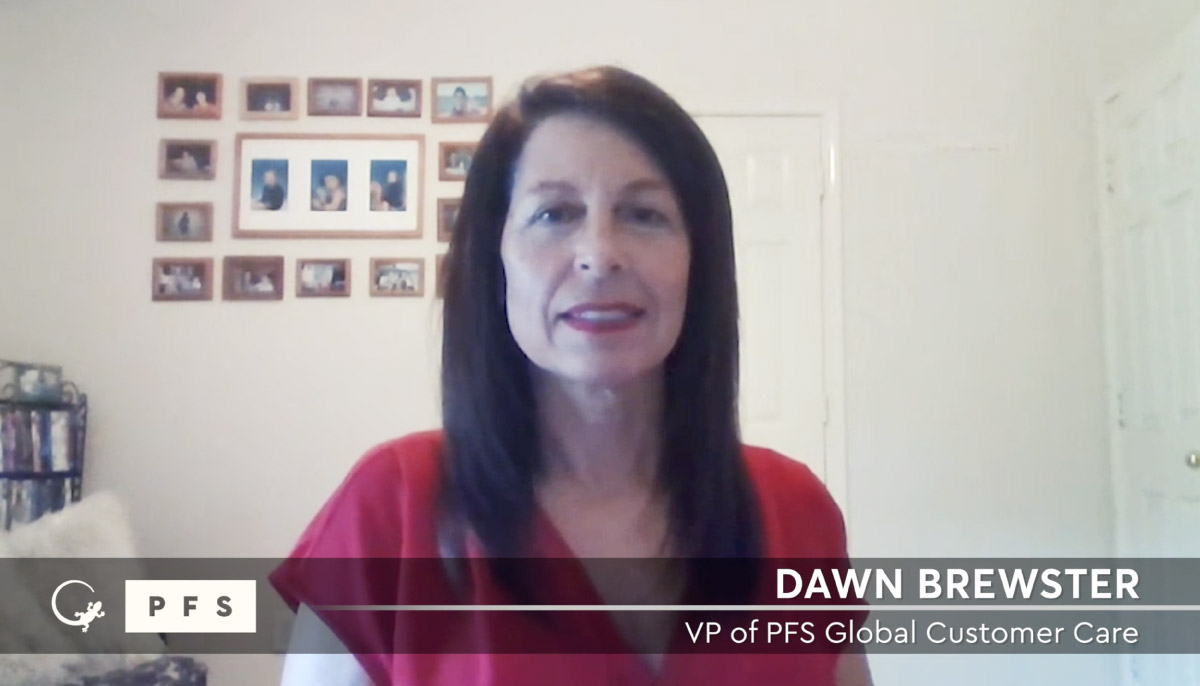
Work-From-Home Customer Care: What We’ve Learned
Just four short months ago, COVID-19 fast-tracked implementation of PFS’ work-from-home (WFH) customer care operations. Within two weeks of social distancing measures being implemented, the PFS team transitioned our on-site customer care operations to a new WFH model, and we continue to operate 100% remotely.
We checked in with PFS VP of Contact Center Operations, Dawn Brewster, to see how the transition to WFH customer care is going and what we’ve learned so far.
PFS WFH Philosophy
What began as a response to an immediate need to prioritize employee safety has actually resulted in improved contact center metrics. Agents are happy to be working from home and it shows. PFS has seen a drop in attendance issues and we’re experiencing lower attrition rates across clients. Agents are very happy to be able to stay home and avoid navigating the complications COVID-19 presents. It has been an overwhelming positive experience.
On-boarding process
Our timeline for on-boarding clients has not been affected by the transition. We are still able to get new clients up and running within five to seven weeks, depending on system requirements. Where we are really seeing a change, though, is in the on-boarding of employees since we are no longer tethered strictly to one area. The WFH environment broadens our recruiting capabilities immensely. Now we can essentially hire employees from anywhere. Additionally, flexible scheduling allows us to target stay-at-home parents or students who can’t work the traditional hours or maybe need to work less than 40 hours a week. Whatever the appropriate schedule is to meet an employee’s needs, we can work with them.
Creating an inclusive WFH environment
We learned from employee surveys early on that the home environment does come with a different set of distractions and challenges for agents. We went to work figuring out ways to provide an inclusive environment for agents that ensures they remain connected to peers and supervisors. Using Communities in Microsoft Teams, we’ve been able to ensure a very natural synergy between agents.
Training and evaluating agents
There are some new complexities involved in training agents in a WFH environment. Without face-to-face interaction, we lose the ability to visually assess how agents are absorbing the instruction. We quickly learned that we needed to delineate between agents who could self-pace and those who required more instruction. We gauge this need by sending an assessment to agents after each training module, which allows as to see if further training is required. Overall, we continue to have a very high graduation rate and we’re seeing that agents are successful once they enter the production environment. We continue to review the process to see how we can help agents succeed.
Simulating an on-site environment
Avoiding feelings of isolation has been a key motivator for simulating an on-site environment. We have been intentional about creating synergy within each brand’s team. Using Communities, agents can interact with others on their team to ask questions or share best practices for how to respond to various customer requests, much like they would do on-site at the contact center.
A big thank you to Dawn for taking the time to update us on how the PFS WFH transition is going!
Have your contact center operations suffered in the wake of COVID-19 disruption? PFS’ WFH solution can help! Send us a note to learn more.


